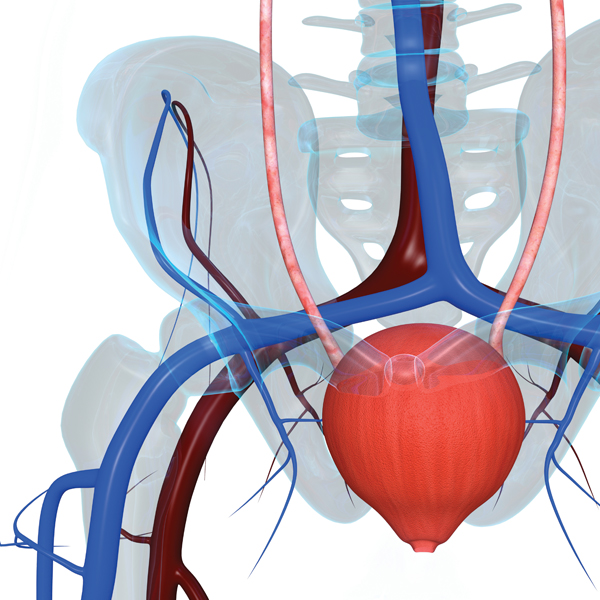Urinary Incontinence or Obstruction
Treatment for:
Urinary Incontinence or Obstruction
Procedures offered:
Prostate artery embolization (PAE)
Ureteral stenting
Urinary incontinence caused by benign prostate hyperplasia (BPH)
In men, urinary incontinence can be caused by BPH—a condition where the prostate becomes enlarged but the enlargement is not caused by cancer. A new treatment option is available as an alternative to surgery, and with fewer complications than transurethral resection of the prostate: Prostate artery embolization (PAE). PAE may also be performed in men who are not candidates for traditional treatment methods, such as when BPH is smaller than 50 cc or larger than 80 cc.
PAE is performed by an interventional radiologist using image guidance to thread a catheter into the prostate artery on both sides of the enlarged gland. The artery is them embolized to block blood flow, causing the prostate to shrink.
Urinary Obstruction
The ureters are long, narrow tubes that carry urine from the kidneys to the bladder. Sometimes, ureters can become obstructed due to kidney stones, blood clots or kidney stones. A uretal stent is a thin, flexible tube threaded into the ureter by an interventional radiologist. During this procedure, a tube is placed through the skin on the patient’s back into the kidney to open the ureter and restore the flow of urine into the bladder. This is known as ureteral stenting.
PAE and Uretal Stenting – Preparation Instructions
- You should report to your doctor all medications that you are taking—including herbal supplements—and if you have any allergies, especially to local anesthetic, medications, general anesthesia or to contrast materials (also known as “dye” or “x-ray dye”).
- Your physician may advise you to stop taking aspirin, nonsteroidal anti-inflammatory drugs (NSAIDs) or a blood thinner for a specified period of time before your procedure. Also inform your doctor about recent illnesses or other medical conditions.
- Women should always inform their physician and x-ray technologist if there is any possibility that they are pregnant. Many imaging tests are not performed during pregnancy so as not to expose the fetus to radiation. If an x-ray is necessary, precautions will be taken to minimize radiation exposure to the baby.
- In most cases, you may take your usual medications, especially blood pressure medications. These may be taken with some water in the morning before your procedure.
- You may be instructed to not eat or drink anything for several hours before your procedure.
- You will be given a gown to wear during the procedure.
To learn more about the Surgical Center of Central Florida’s urinary incontinence treatment options, please contact us »
The Surgical Center of Central Florida is an affiliate of Radiology and Imaging Specialists.

